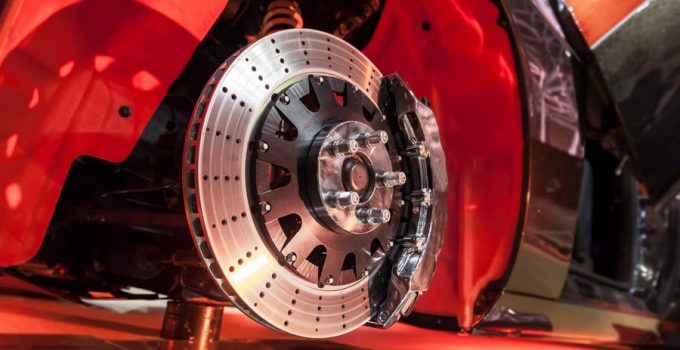
Originally from motorsport, they are also becoming increasingly popular in road traffic : perforated and slotted sports brake discs. Where ordinary brake discs reach their limits, they should achieve good braking performance in road traffic, especially in models of the upper vehicle class or sports cars and with a sporty driving style, as they are still one of the safety-relevant parts of the car. In this article, we'll explain the purpose of its particular shape, discuss the pros and cons of each, and what you need to know about interchange.
Contents
General
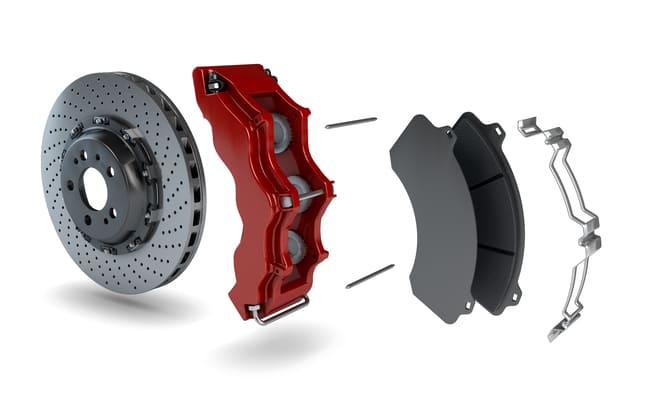
The brake disc is the brake body of the disc brake. There is also the drum brake, which is considered outdated technology due to its diminishing effect when heated.
With disc brakes, the brake disc is usually mounted on the wheel hub. If the braking process is now triggered by pressure on the brake pedal, the pressure is carried on via the brake fluid. The brake pads attached to the brake caliper, i.e. the brake pads, press onto the brake disc parallel to the axis direction, which creates friction and, in turn, heat. Temperatures of up to 700° can be reached, which is why it is important that the heat is dissipated quickly to avoid overheating damage. Because 90% of the heat is temporarily stored by the brake disc.
A common problem with brake discs is, among other things, wear caused by friction with the formation of grooves and the formation of cracks due to highly variable disc temperatures, which occurs, for example, with an aggressive driving style with frequent braking manoeuvres.
To counteract the development of heat, various Methods are used, namely the notching or drilling of the brake discs explained in this article, internal ventilation, heat treatment or the use of two-piece brake discs.
The advantages of slotted or perforated brake discs
Why are brake discs perforated or notched? Basically, the grooves and holes in the brake discs are used for ventilation and cooling in order to ultimately achieve better braking and tire grip. Because without these prepared areas, a phenomenon called “fading” would occur. This effect occurs when heat is not released and as a result gases from the resins of the friction material escape through combustion, which build up like a kind of buffer between the brake disc and the brake pad. The result is a worse brake friction value with decreasing braking performance. Another reason for the indentations and recesses in the brake discs is to better drain off accumulated water, otherwise a film would form on the surface, which would reduce the coefficient of friction.
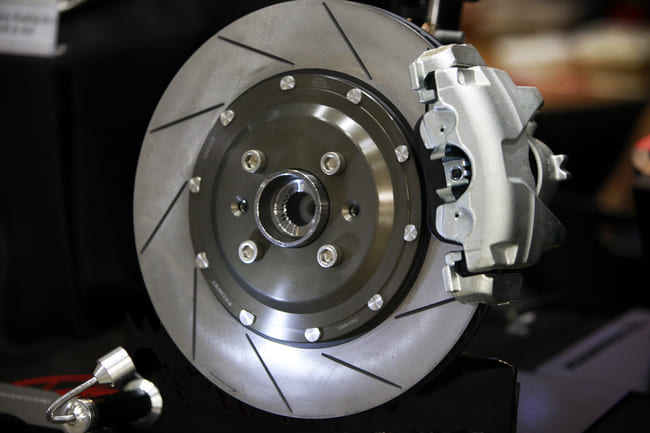
Slotted brake discs are advantageous because the grooves act as a drainage channel. If the wheel now rotates, dirt or rainwater adhering to it is pushed outwards by means of the grooves. Therefore, the correct installation direction must be observed during installation so that water and dirt are drained from the inside to the outside and not vice versa. At the same time, the grooves fulfill a cleaning function for the friction lining, which on the one hand prevents scoring and wear on the discs is more even.
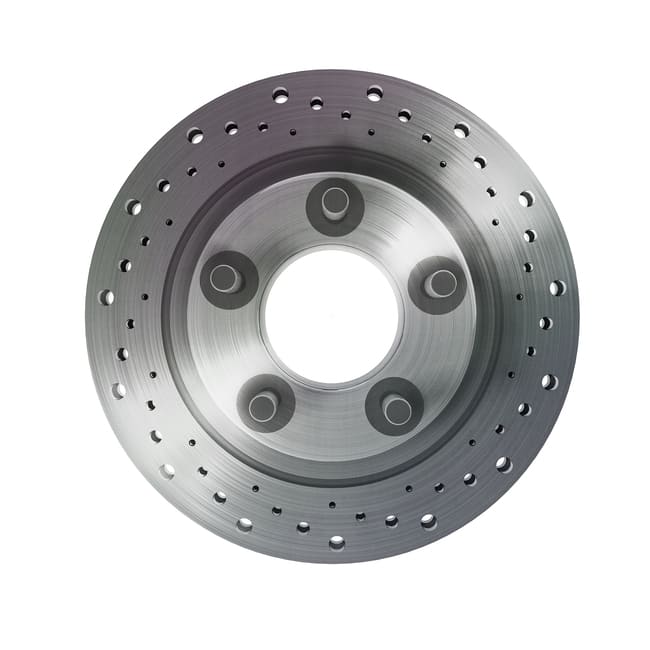
What good are perforated brake discs? Here, too, the perforations serve to prevent film formation on the surface of the brake disc. Thanks to the recesses, heat development is avoided and the desired braking reaction is achieved even in the rain.
The disadvantages of slotted or perforated brake discs
The disadvantages of slotted or perforated brake discs
However, the advantages mentioned turn out to be disadvantages at the same time, since the interruption of the material structure produced by the cutouts leads to a certain instability. Cracks could develop, especially with perforated brake discs, where the recesses were worked in afterwards. For this reason, these are often already taken into account during casting. In this way, the risk of the perforations tearing can be reduced or avoided.
In addition, the new structure means that the wear is higher than with smooth brake discs. Because when braking, the brake pads press into the grooves and recesses, causing the pads to be rubbed off by the edges. In addition, it can happen that edges protrude after the manufacturing process of the discs, which is why they are rounded.
Slotted vs. perforated brake discs – Which is better?
The shape of slotted brake discs gives the driver a visual indication of when a replacement is necessary. If the grooves are no longer visible, the legal minimum thickness is no longer met and the pane must be replaced. Such an indicator is missing with perforated brake discs.
All in all, the performance differences between the two variants in road traffic are minimal and both versions achieve the required effect. Such sports brake disks are particularly suitable for sporty driving and for vehicles in the upper class. But they are already available for vehicles in the compact and mid-range classes. According to Brembo, the market leader for disc brakes, slotted brake discs only perform slightly better on racetracks in terms of mechanical resistance.
Material, disc change and delimitation to motorsport
The brake disc is made of gray cast iron or a steel alloy, for example, in vehicles with higher demands on the braking load of carbon, i.e. made of light and at the same time robust carbon fiber reinforced plastic, or ceramic-carbon composite materials. To protect against corrosion and for design reasons, some sports brake discs are coated in color.
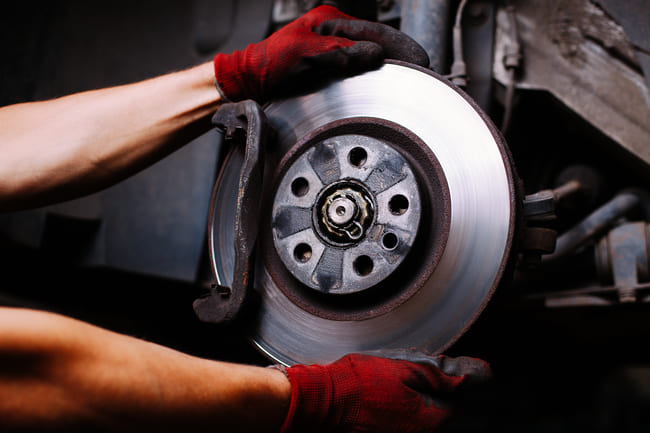
Nevertheless, sports brake discs are subject to wear and tear just like normal brake discs from a certain point. When a replacement is necessary depends very much on your own driving style and situation and cannot be precisely quantified. A mileage of between 30,000 and 100,000 kilometers can be used as an approximate value. In this case, the brake discs are renewed axle by axle together with the brake pads, which in turn are bled.
Sports brake discs for everyday road traffic should not be confused with sports brake discs designed for motorsport. Because the latter are confronted with much higher heat loads and driving maneuvers and have a structure specially designed for racing, which is not necessary for road traffic.
Conclusion
Because of their advantages, sports brake discs are being used more and more in automotive construction for road traffic. Due to their construction, these are designed for sporty, fast driving and withstand the loads. However, various factors still lead to wear and tear. Regular checks and replacements by specialist workshops are essential for the brake discs to function properly.
A tip from CarTipsandmore: There are plenty of sports brake discs on the spare parts and tuning market. Given the multitude of products and providers, it can be difficult to keep track. Basically, as with all spare parts, care should be taken not to buy used or overhauled spare parts, to rely on reputable suppliers and to invest in high-quality processing. For safety reasons, the installation should be carried out by qualified specialists. Safety and quality come before costs.
